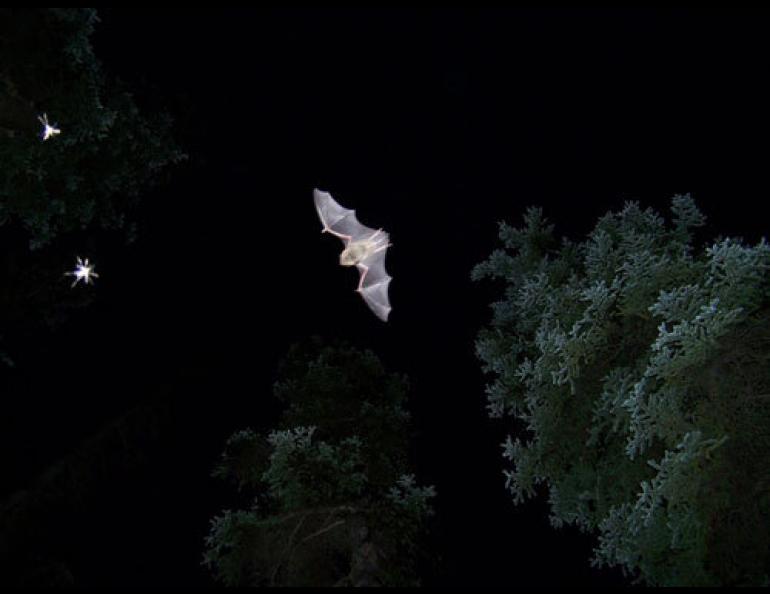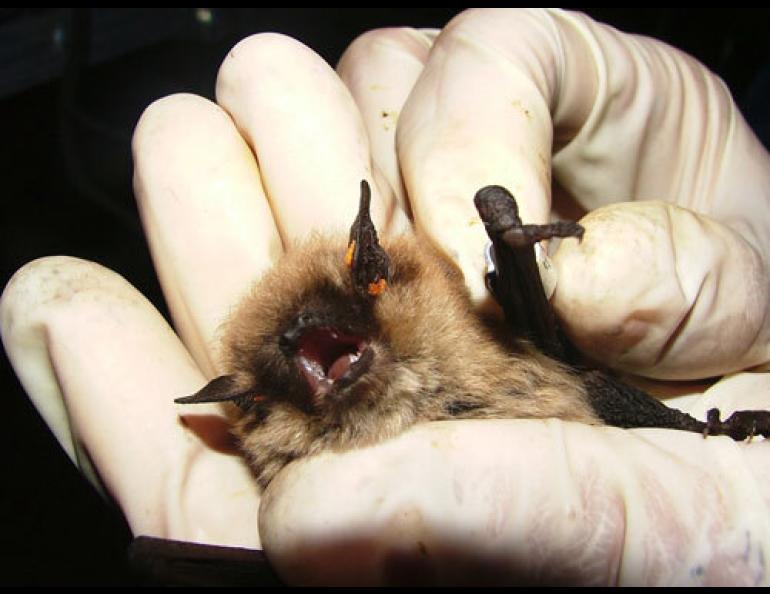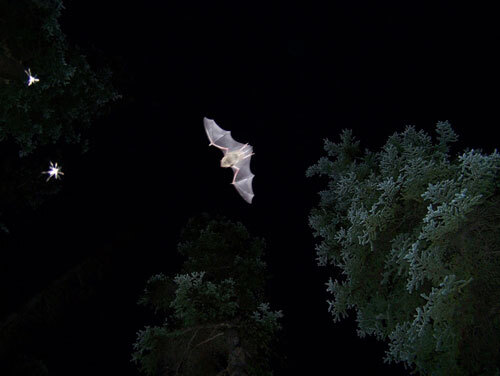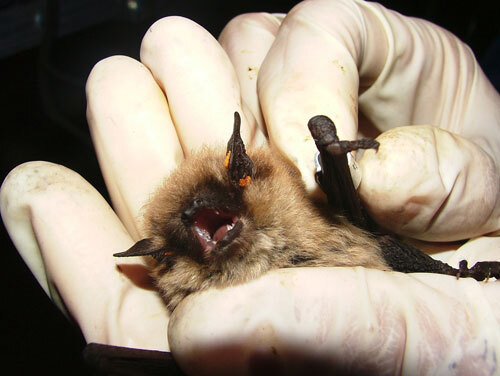

Where are the Alaska bats right now?
Eileen Weatherby of Fairbanks wrote in mid-September that her cat carried in a surprise one morning. Instead of the usual vole, her cat had captured a bat.
“I was startled because I thought bats in the Interior were pretty rare,” she wrote in an email message.
Eileen is right. Alaska is the far, frigid edge of bats’ existence. But they do live in Alaska, in places with trees, perhaps as far north as Fort Yukon. The palm-size creatures are now, in mid-October, avoiding below-freezing temperatures by either hibernating or migrating southward. Scientists aren’t quite sure which strategy far-north bats employ.
“I’ve had people tell me they know where bats hibernate in winter,” said Doreen Parker McNeill, who works at the Alaska Department of Fish & Game and who studied bats for her degree work at the University of Alaska Fairbanks. “Keith Price of Salcha once said he saw them hibernating in the utility corridors at Eielson Air Force Base,” she said.
Price was an interested bat-watcher who shared his fondness for bats with scientists. The longtime resident of Salcha once stored his potatoes in a heated Quonset hut. Little brown bats, the only species of bat identified in Interior Alaska, liked the hut so much that about 200 of them once lived in it, making the maternity bat colony there the farthest north in North America. Price invited scientists to visit his barn and study the bats. Among other things, they found that Alaska bats, both in Southeast and in Salcha, ate spiders.
“I hadn’t seen anything in the literature about bats eating spiders,” Parker McNeill said.
Alaska bats also eat moths, no-see-ums, and other flying insects, including mosquitoes.
“A colony of 500 little brown bats can easily consume 500,000 insects in a single night,” Jack Whitman wrote in an Alaska Department of Fish & Game’s Wildlife Notebook entry.
Little brown bats are the only species of bat found north of Southeast Alaska, where in 2005 and 2006, Julia Boland – then an Oregon State graduate student – captured California bats, long-legged bats, and Keen’s bats. She also saw and heard silver-haired bats. In addition, Boland found bats hibernating in caves of Southeast Alaska, but what do bats do farther north, where winter temperatures are too cold and dry to sustain their delicate bodies?
“In the Lower 48, banded hibernating bats were found 400 miles away (later in the year),” Parker McNeill said. “I know a little brown bat can migrate that far, but to say they’d cross the Alaska Range and be flying over a just-opened pond on May 8th (as someone reported to her) does seem pretty far-fetched. They could probably do it, but I don’t know.”
Parker McNeill thinks that we may subsidize hibernating bats with our heated structures; a man in Nenana called her once to report he heard bats within his walls all winter. Brian Lawhead of Alaska Biological Research, Inc. remembered a story of a person, also from Nenana, who was pulling firewood from a snow-covered pile when a bat fell out. The bat warmed up, and then flew off, suggesting it may have been hibernating under the snow. But such tales are rare in the far north.
“Hibernating bats have not been found in the Yukon,” wrote Tom Jung, a Yukon government biologist who lives in Whitehorse. “Some Yukon bats migrate in the spring as indicated by groups of bats observed passing over the St. Elias Mountains and glaciers, perhaps returning from coastal hibernacula.”
Valerie Baxter lives with her husband Dan on a farm in North Pole. Bats live at the farm in summer, but “the first time we get a hard frost, we quit hearing them,” she said. “And their scat deposition drops off – we just figure they’re gone.”
The mystery endures. Are bats among us now in northern Alaska, somehow keeping their wee selves from freezing solid, or are they now headed south, beating their tiny wings above the blue ice of glaciers?
“There’s a great PhD project there for somebody,” Lawhead said.




